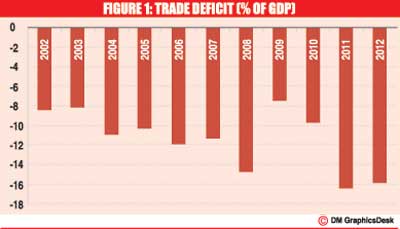Reply To:
Name - Reply Comment
Last Updated : 2024-04-19 06:03:00
.jpg) Sri Lanka has high trade deficits. And, instead of shrinking, they are increasing over the years. The current government policy, based on import substitution, will not be able to solve this serious problem.
Sri Lanka has high trade deficits. And, instead of shrinking, they are increasing over the years. The current government policy, based on import substitution, will not be able to solve this serious problem. being done about it is not working and what will work is not being done.
being done about it is not working and what will work is not being done. Picking the wrong battle
Picking the wrong battle.jpg) ability to convert industries supported by import substitution to become export oriented.
ability to convert industries supported by import substitution to become export oriented.
Add comment
Comments will be edited (grammar, spelling and slang) and authorized at the discretion of Daily Mirror online. The website also has the right not to publish selected comments.
Reply To:
Name - Reply Comment
On March 26, a couple arriving from Thailand was arrested with 88 live animal
According to villagers from Naula-Moragolla out of 105 families 80 can afford
Is the situation in Sri Lanka so grim that locals harbour hope that they coul
A recent post on social media revealed that three purple-faced langurs near t

10 Apr 2024
09 Apr 2024